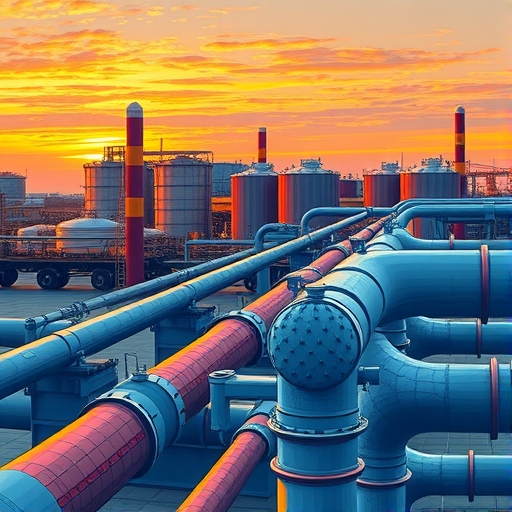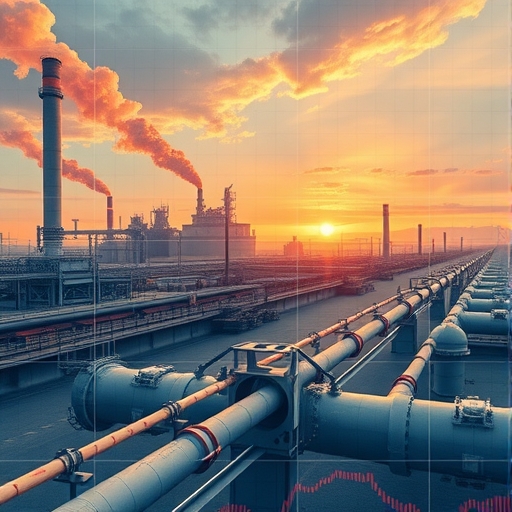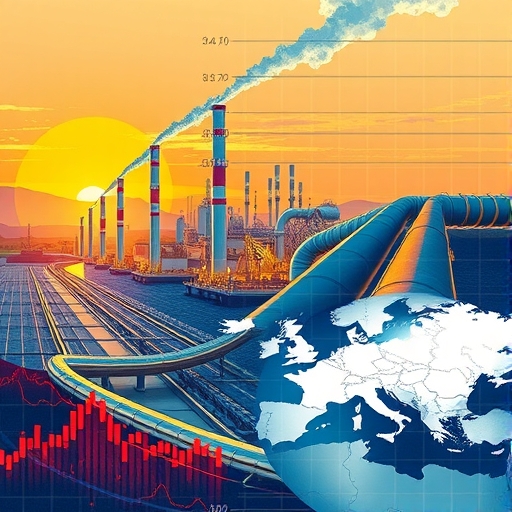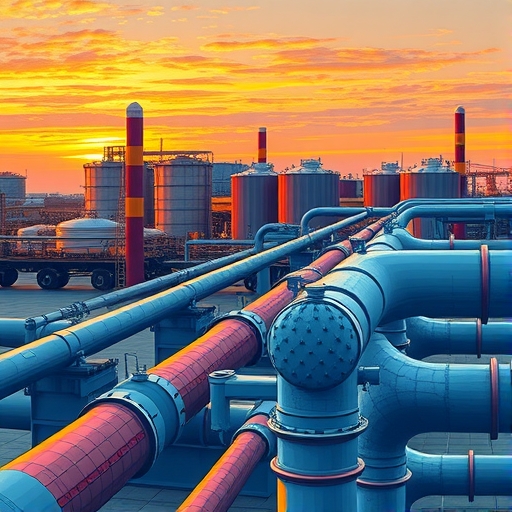Welcome, aspiring investors and seasoned traders, to an in-depth exploration of one of the global energy market’s most enigmatic players: Public Joint Stock Company Gazprom (MCX:GAZP). As you step into the complex world of energy commodities and equity markets, you’ll quickly discover that not all assets behave as neatly as economic textbooks might suggest. Today, we delve into a compelling paradox, where a company boasting exceptional earnings growth appears to be significantly undervalued, yet presents unique challenges for those considering its shares. How can such a dichotomy exist, and what does it mean for your investment journey?
At first glance, Gazprom, a titan of the integrated energy sector, might seem like an unmissable opportunity. We’re talking about a company that commands a staggering presence in gas, gas condensates, and oil exploration, production, processing, storage, transportation, and sale. It manages Russia’s vast Unified Gas Supply System, a network of pipelines that forms the arteries of Europe’s energy supply. Yet, despite its colossal footprint and impressive financial metrics, its shares (MCX:GAZP) tell a story of underperformance and caution. Our mission today is to unravel this paradox, guiding you through the intricate interplay of geopolitical dynamics, corporate strategy, and raw financial data.

Think of it like this: you’ve found a classic car in your neighbor’s garage. It boasts an incredibly powerful engine, gleams with the promise of speed, and its production history suggests it should be a collector’s item worth a fortune. But then you notice it has flat tires, it’s parked in a hard-to-reach spot, and the ownership papers are complicated. Would you still invest? This analogy, albeit simplified, captures the essence of the Gazprom investment proposition. We’ll examine the powerful engine (strong earnings), the collector’s value (estimated fair value), and the challenges (illiquidity, market access, geopolitical factors) that make this a truly unique case study for any serious investor.
The flow of natural gas through Europe’s intricate pipeline network is a daily barometer of energy demand, geopolitical tensions, and supply security. For investors, understanding these movements isn’t just about reading headlines; it’s about discerning the foundational shifts that can impact the profitability and stability of major energy companies like Gazprom. Have you ever considered how a seemingly minor increase in gas flow in one pipeline can ripple across an entire continent’s energy market?
Recent data provides a fascinating snapshot: we’ve observed a significant surge in eastbound gas flows via the Yamal-Europe pipeline. Specifically, from Germany into Poland, the exit flows at the Mallnow metering point jumped dramatically to 5,476,552 kWh per hour during the 0800-0900 CET period, a notable increase from less than 2,300,000 kWh/h earlier. This isn’t just a number; it represents a tangible shift. Eastbound flows imply gas moving away from Western Europe, possibly back into storage or towards other markets like Poland, rather than the traditional west-bound flow that supplies much of Europe from Russia.
Simultaneously, we’ve seen that flows of Russian gas to Europe via Ukraine have remained remarkably stable. This dual observation is critical. While one key artery, Yamal-Europe, showed a significant directional change, another crucial transit route maintained its steady rhythm. What could this mean? It could indicate dynamic adjustments to regional demand, strategic decisions regarding gas storage levels, or even the subtle maneuvering of geopolitical influence within the energy sphere. For an integrated energy company like Gazprom, these operational shifts directly impact its logistical flexibility, revenue streams, and its role as a reliable energy provider to a continent undergoing significant energy transitions.
Such fluctuations underscore the inherent volatility and complexity of the European natural gas market. For you as an investor, tracking these physical flows provides a granular, real-time insight into the supply-demand dynamics that underpin the financial performance of energy giants. It’s a vivid reminder that the market for natural gas isn’t a static entity; it’s a living, breathing system, constantly adapting to a myriad of pressures.
Now, let’s peel back the layers of Gazprom’s financial performance. When we analyze a company, we look for key indicators that tell us about its health, its profitability, and its potential. Gazprom’s financial tapestry, while impressive in parts, reveals some intriguing patterns that warrant your close attention. What metrics truly matter when assessing a company of this scale, and how do they paint a picture of its current standing?
Consider the raw numbers: Gazprom boasts a substantial Market Capitalization ranging from ₽4.68 to ₽4.7 trillion RUB. This places it firmly among the largest companies on the Moscow Exchange (MCX). But market cap alone doesn’t tell the whole story. We need to dig deeper. Its trailing twelve-month (TTM) Price-to-Earnings (P/E) Ratio stands at a remarkably low 2.24, with a TTM Earnings Per Share (EPS) of 88.52. For those familiar with market valuations, a P/E ratio this low often signals that a stock is either severely undervalued or faces significant underlying risks that the market is pricing in.
Perhaps the most astonishing figure on Gazprom’s recent balance sheet is its earnings growth: a staggering 1456% over the past year. Yes, you read that correctly – over fourteen hundred percent! This level of growth is virtually unheard of for a company of Gazprom’s size and maturity. It typically indicates exceptional operational efficiency, favorable market conditions for its core products, or perhaps a significant one-off event. Yet, despite this phenomenal earnings surge, the stock has **underperformed the broader Russian Oil and Gas industry by -19.9%** and the **broader Russian Market by 0.7%** over the past year, registering a **-47.1% one-year change**. This stark contrast between incredible earnings growth and poor stock performance is the core of our paradox.

Furthermore, Gazprom’s 52-week trading range of ₽126.53 to ₽339.98 highlights its significant price swings. While its Beta (5Y Monthly) of 0.50-0.64 would typically suggest lower volatility relative to the market, the actual price performance over the last year and volatility over the past three months compared to the Russian market itself suggests that this historical beta might not fully capture the recent, extraordinary influences on the stock. These figures are not just abstract data points; they are the puzzle pieces you, as an astute investor, must assemble to form a coherent picture of value and risk.
We’ve observed Gazprom’s impressive earnings growth and its surprisingly low P/E ratio. Yet, financial analysis platforms estimate that GAZP is trading at an estimated 42.4% below its fair value. This raises a crucial question: If the fundamentals are strong, why is the market not reflecting this “fair value” in its current price? This discount isn’t arbitrary; it’s a manifestation of deeply ingrained market perceptions and practical challenges. Have you ever wondered what forces can prevent a stock from trading at its intrinsic worth?
One of the most significant factors contributing to this discount is the high illiquidity of Gazprom’s shares. What does “illiquidity” mean for you? Imagine trying to sell a rare painting. While it might have a high theoretical value, if there are very few buyers interested at any given time, it becomes difficult to sell it quickly without significantly dropping the price. Similarly, for GAZP, the limited number of active buyers and sellers on the Moscow Exchange can make it challenging to execute large orders without impacting the price. This deters large institutional investors who need to enter and exit positions easily, thus reducing demand and keeping the price suppressed below its perceived fair value.
Beyond liquidity, geopolitical factors cast a long shadow over Gazprom’s valuation. As a state-controlled entity deeply embedded in Russia’s energy strategy, Gazprom’s fate is inextricably linked to international relations, sanctions, and energy policy. Investor sentiment is heavily influenced by these external pressures, leading to a significant “geopolitical discount.” Even if the company’s internal operations are robust, the perceived risk associated with political instability or further sanctions can make investors hesitant, driving down the price. This risk premium acts as a buffer, ensuring that the stock trades at a lower multiple than it would in a more stable, predictable environment.
Moreover, the instability of its dividend track record, despite a forward dividend and yield of 12.55 (4.71%), adds another layer of uncertainty. While a high dividend yield can be attractive, an unpredictable history suggests that investors cannot rely on consistent payouts, further dampening long-term investor confidence. When these factors combine – high illiquidity, significant geopolitical risk, and dividend uncertainty – they create a formidable barrier, preventing the stock from reaching its calculated fair value. For you, this means recognizing that “undervalued” doesn’t always translate to “imminent opportunity”; sometimes, it signifies a complex web of risks that the market is rationally pricing in.
Companies, especially those of Gazprom’s immense scale, are rarely static. They continuously adapt their portfolios through acquisitions and divestitures in response to market changes, strategic objectives, and, crucially for Gazprom, geopolitical shifts. Have you ever considered how a company’s decisions to sell off key assets can tell you a story about its future direction?
Gazprom has been notably active in strategic realignments, particularly concerning its European and regional assets. We’ve seen significant divestitures, including the sale of its 34% stake in AS Latvijas Gaze, a key player in Latvia’s gas market. Similarly, the company divested its activities in Vestmoldtransgaz SRL, which operates Moldova’s gas transmission system, and a substantial 48% stake in System Gazociagow Tranzytowych Europol Gaz S.A., a joint venture responsible for the Polish section of the Yamal-Europe pipeline. Furthermore, Gazprom has offloaded non-core assets like the Peak Hotel and its remaining 50% of AO Overgaz Inc.
What do these divestitures signal? On one hand, they suggest a strategic refocusing, possibly streamlining operations or shedding assets that have become politically or economically burdensome. The sales in Latvia, Moldova, and Poland indicate a deliberate reduction of direct operational presence in certain European markets, likely influenced by the evolving energy relationship between Russia and the EU, alongside increased regulatory scrutiny and a push for energy independence in these nations. These actions could be interpreted as Gazprom’s adaptation to a new, more fragmented European energy landscape, where direct ownership of infrastructure in certain countries may no longer be strategically viable or desirable.
| Divested Assets | Details |
|---|---|
| AS Latvijas Gaze | 34% stake sold in Latvia’s gas market. |
| Vestmoldtransgaz SRL | Divested activities in Moldova’s gas transmission. |
| System Gazociagow Tranzytowych Europol Gaz S.A. | 48% stake in Polish section of Yamal-Europe pipeline sold. |
| Peak Hotel | Offloaded non-core asset. |
| AO Overgaz Inc. | Remaining 50% stake sold. |
Conversely, while divesting, Gazprom has also considered potential acquisitions, such as Fortum’s Russian assets, and its stake in Portovaya LNG has attracted interest from RusKhimAlyans. This shows a dynamic approach to portfolio management, aiming to consolidate or expand in other areas, perhaps focusing on domestic market strength or alternative export routes. For investors, these corporate actions are vital signals. They highlight the company’s efforts to adapt to an increasingly complex global environment, manage risk, and reposition itself for long-term sustainability, albeit under significant external pressures.
For international investors, accessing Russian equities, particularly those of state-backed giants like Gazprom, has become an increasingly arduous task. The world of finance relies on interconnectedness and liquidity, and when these links are severed, the impact on market accessibility can be profound. Have you ever considered how global political events can directly impact your ability to trade certain stocks?
A significant hurdle for non-Russian investors interested in Gazprom has been the delisting of PJSC Gazprom ADRs (American Depositary Receipts) and Global Depositary Shares from OTC Equity markets. ADRs and GDS are instruments that allow foreign investors to own shares of non-U.S. companies without having to trade on their home exchanges, simplifying cross-border investments and providing liquidity. Their delisting effectively means that one of the primary avenues for international participation in Gazprom’s equity has been shut down. This action dramatically reduces the pool of potential investors, concentrating trading volume on the domestic Moscow Exchange (MCX), which is less accessible to foreign capital due to sanctions and capital controls.
Further compounding this issue was Gazprom’s removal from the FTSE All-World Index (USD). Global indices like FTSE are crucial benchmarks that institutional investors, mutual funds, and exchange-traded funds (ETFs) track. When a company is removed from such a major index, it automatically triggers a massive sell-off by these passive funds, regardless of the company’s fundamentals, as they must rebalance their portfolios to mirror the index. This not only adds selling pressure but also significantly reduces the company’s visibility and inclusion in global investment portfolios. It signifies a broader trend of “de-globalization” or “de-linking” of Russian assets from mainstream international financial markets.
These actions create substantial investor hurdles. For you, it means that even if you perceive Gazprom to be fundamentally undervalued, the practical challenges of buying and selling its shares, coupled with the reduced international demand, make it a far less attractive or even feasible investment for many. The shrinking avenues for foreign investment contribute directly to the stock’s illiquidity and its inability to trade at what might otherwise be considered its fair market value. Understanding these structural barriers is just as important as analyzing the company’s earnings reports.
| Investor Hurdles | Details |
|---|---|
| Delisting of ADRs | Primary avenue for international participation in Gazprom shut down. |
| Removal from FTSE All-World Index | Triggers massive sell-off by passive funds. |
| Access Challenges | Concentration on domestic market limits foreign capital. |
In technical analysis, metrics like Beta are supposed to offer clear guidance on a stock’s volatility relative to the broader market. A Beta of 1 indicates the stock moves in tandem with the market, while a Beta below 1 suggests lower volatility. Gazprom’s Beta (5Y Monthly) of 0.50-0.64 would typically categorize it as less volatile than the market it operates within. Yet, its observed price performance, including a -47.1% one-year change and significant recent swings, seems to contradict this. How can we reconcile these seemingly conflicting signals?
The standard interpretation of Beta assumes a relatively stable market environment where historical correlations hold true. However, for a company like Gazprom, operating at the epicenter of geopolitical tensions and subject to unprecedented external pressures, historical Beta can become a misleading indicator. The reality is that the Russian market itself has experienced extraordinary volatility and fragmentation due to sanctions and capital controls. Therefore, a Beta of 0.50-0.64 might indicate lower volatility relative to the *highly volatile and isolated Russian market*, rather than to a globally integrated, stable market benchmark.
Furthermore, the “volatility over the past 3 months compared to the Russian market” mentioned in the data suggests that even within its domestic context, GAZP has been subject to considerable price swings. This heightened observed volatility, despite a low historical Beta, underscores the profound impact of non-financial factors. Major news events, policy announcements, or shifts in international relations can trigger sharp, unpredictable movements in Gazprom’s stock price that are entirely disconnected from its operational performance or traditional market forces. This introduces a level of systemic risk that is difficult, if not impossible, to quantify using conventional technical indicators alone.
For you, the takeaway is crucial: while technical indicators provide valuable insights, they are not infallible, especially in highly unusual market conditions. When dealing with assets like GAZP, where geopolitical influences dominate, you must look beyond the numbers and consider the broader macro-economic and political landscape. Understanding that traditional risk measures might not fully capture the unique risks involved is paramount for protecting your capital and making informed decisions. It’s a powerful lesson in adapting your analytical framework to the specific context of the asset you’re evaluating.

While our focus today has been on the intricacies of Gazprom’s equity (MCX:GAZP), it’s important to remember that the energy market offers a diverse range of opportunities beyond direct stock ownership. The dynamics of natural gas flows and geopolitical influences we’ve discussed have broader implications for trading strategies across various financial instruments. Have you considered how you can gain exposure to energy market trends without directly investing in individual, potentially illiquid, stocks?
For many investors and traders, the energy market’s volatility and the fundamental importance of commodities like natural gas present compelling opportunities for diversification and speculation. This often involves trading derivatives such as Futures or Contracts for Difference (CFDs) that track energy prices. CFDs, for instance, allow you to speculate on the price movements of underlying assets—like crude oil, natural gas, or even energy sector indices—without owning the asset itself. This can provide greater flexibility, leverage potential (though with increased risk), and the ability to profit from both rising and falling markets.
If you’re looking to explore these broader energy market opportunities, particularly through CFDs or other financial instruments, selecting the right trading platform is a critical first step. You need a platform that offers a wide range of products, robust trading tools, and reliable execution. If you’re considering expanding your trading horizons beyond traditional equities and into the dynamic world of commodities and CFDs, then Moneta Markets is a worthy platform to consider. Hailing from Australia, it provides access to over 1000 financial instruments, catering to both novice and experienced traders alike. It’s about finding the right tools that align with your risk appetite and trading strategy as you navigate the energy market’s complexities.
The global energy landscape is constantly shifting, influenced by everything from gas flow disruptions to corporate divestitures. Having the ability to trade these movements through various financial products can be a valuable addition to your investment toolkit. Whether it’s oil, gas, or even the broader energy sector via indices, understanding the underlying market drivers, such as those impacting Gazprom, empowers you to make more informed decisions across a wider spectrum of assets.
Our journey through Gazprom’s complex world brings us to an undeniable truth: investing in financial instruments, particularly those linked to geopolitically sensitive sectors or high-volatility markets, inherently involves significant risks. It’s not just about potential gains; it’s about diligently understanding and mitigating potential losses. Have you fully assessed your own risk appetite before committing capital to challenging markets?
The general market context provides clear warnings: trading in financial instruments and cryptocurrencies involves high risks, including the potential for capital loss, and may not be suitable for all investors. This isn’t boilerplate language; it’s a fundamental principle of prudent investing. Cryptocurrency prices, for instance, are notoriously volatile and heavily influenced by external factors such as financial, regulatory, and political events. While Gazprom is an equity, it shares a similar vulnerability to macro-environmental shocks that can dramatically alter its trajectory irrespective of its operational strength.
Furthermore, relying solely on publicly available data, especially from free online sources, requires a critical eye. Data on websites like Fusion Media, for example, is explicitly noted as “not necessarily real-time or accurate.” Prices displayed may be indicative and differ from actual market prices. This emphasizes the importance of verifying information from multiple reputable sources, exercising skepticism, and understanding that what you see on your screen might not always reflect the precise, actionable market reality. Accuracy and timeliness of information are cornerstones of effective decision-making, especially when trading highly volatile or illiquid assets.
As a responsible investor, we urge you to thoroughly assess your individual investment objectives, level of experience, and tolerance for risk before making any trading decisions. The complexity of Gazprom’s situation—marked by strong earnings yet high illiquidity, geopolitical influences, and market access challenges—demands a heightened level of due diligence. Seeking independent professional advice is not just a recommendation; it’s often a necessity when navigating markets riddled with such intricate layers of risk. Remember, the goal is not just to chase returns, but to protect your capital and make decisions aligned with your long-term financial well-being.
When selecting a platform for trading, especially for high-risk assets or more complex instruments like CFDs, the flexibility and technical advantages offered by your chosen broker are paramount. Moneta Markets is notable for its support of industry-standard platforms like MT4, MT5, and Pro Trader. This, coupled with high-speed execution and competitive low spreads, aims to provide a reliable trading experience. Such features are crucial for managing risk efficiently in dynamic markets, allowing you to react swiftly to price movements and execute strategies precisely.
As we conclude our comprehensive analysis of Gazprom, we must look to the future. The company stands at a pivotal juncture, navigating not only the immediate challenges of geopolitics and market access but also the long-term forces of global energy transition. What does the road ahead hold for this energy colossus, and how should you, as an investor, contextualize its long-term potential?
Gazprom, as an integrated energy company, is inherently tied to the future of fossil fuels. While global efforts toward decarbonization and renewable energy accelerate, natural gas is widely considered a crucial “transition fuel,” offering a cleaner alternative to coal in power generation and playing a vital role in industrial processes. This position could offer a degree of resilience for Gazprom, assuming stable demand for natural gas persists during the multi-decade transition period. However, the push for energy independence in Europe, coupled with the development of alternative supply routes and technologies, will undoubtedly reshape its traditional export markets and operational strategies.
The ongoing strategic realignments, including divestitures from European assets and potential shifts towards Asian markets (as hinted by past considerations by Chinese firms to buy stakes in Russian energy entities), suggest Gazprom is actively adapting to these macro changes. Its robust core business, demonstrated by strong EPS performance in 2021 despite the evolving environment, indicates operational strength that could form a basis for future profitability. Yet, the persistent issues of illiquidity for its shares, the unpredictable dividend policy, and the overarching geopolitical discount will continue to weigh heavily on its market valuation and investor appeal, at least in the near to medium term.
For you, the investor, evaluating Gazprom’s future requires a nuanced perspective. It’s a company with immense fundamental strength and strategic importance, yet it operates within an environment of profound uncertainty and structural barriers. Its trajectory will be a powerful case study in how energy giants adapt to a world increasingly shaped by climate policy, geopolitical realignments, and shifting trade flows. As you refine your investment strategies, consider how such complex narratives demand a blend of fundamental analysis, macro-economic understanding, and a keen awareness of market inefficiencies. The ability to discern value amidst turbulence, and to recognize when practical barriers outweigh theoretical potential, is the hallmark of a truly astute investor.
Finally, for those who seek to diversify their portfolio and explore global trading opportunities beyond specific equities, a trusted global partner is essential. If you are looking for an FX broker with strong regulatory backing and comprehensive support, Moneta Markets holds multiple regulatory licenses, including from FSCA, ASIC, and FSA. They provide client fund segregation, complimentary VPS services, and 24/7 multilingual customer support, making them a preferred choice for many global traders. This comprehensive support allows you to focus on your trading strategies, whether they involve energy commodities, currencies, or other global financial instruments, with greater peace of mind.
mcx gazpFAQ
Q:What are the main factors contributing to Gazprom’s current low P/E ratio?
A:The low P/E ratio can be attributed to high illiquidity, geopolitical risks, and market perceptions that continue to weigh down the stock price despite strong earnings growth.
Q:How do geopolitical factors influence Gazprom’s market valuation?
A:Geopolitical factors create a “geopolitical discount,” as investor sentiment is affected by international relations, sanctions, and energy policy, impacting demand for Gazprom’s shares.
Q:What are the implications of Gazprom’s divestitures?
A:Divestitures may signal a strategic refocusing, allowing Gazprom to adapt to changing market conditions and potentially reduce operational burdens in politically sensitive regions.

留言